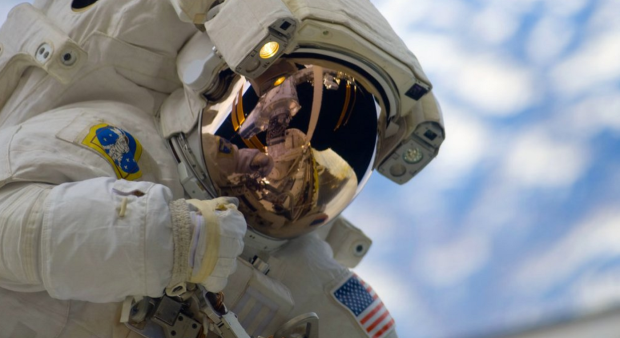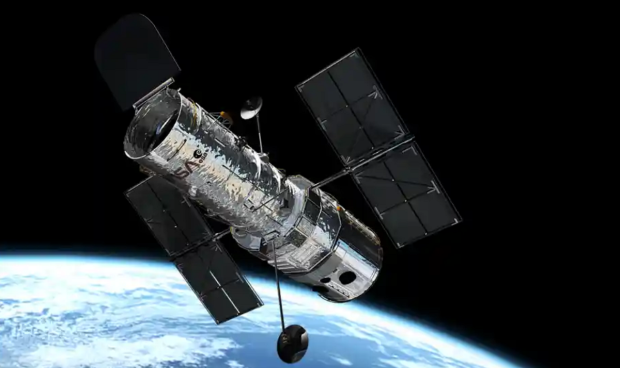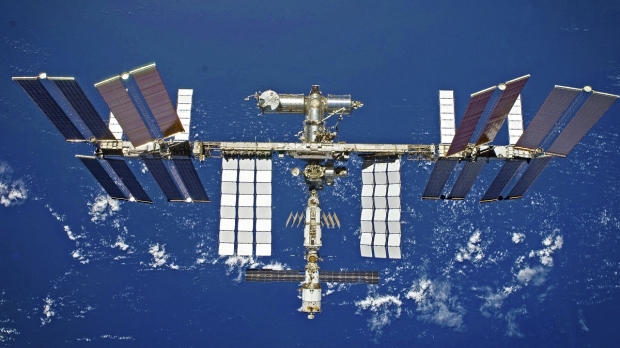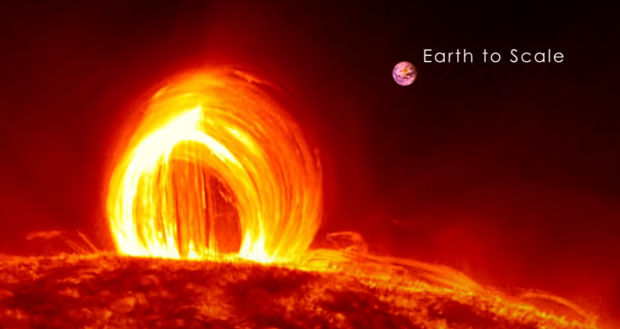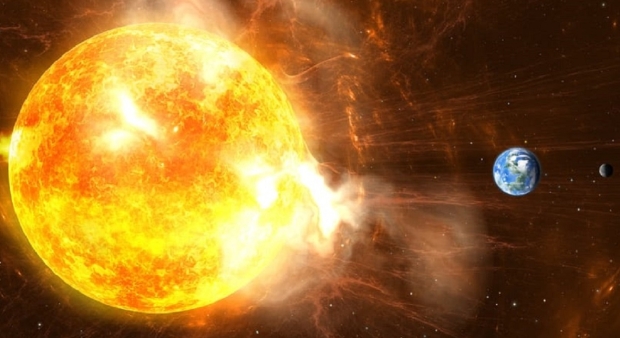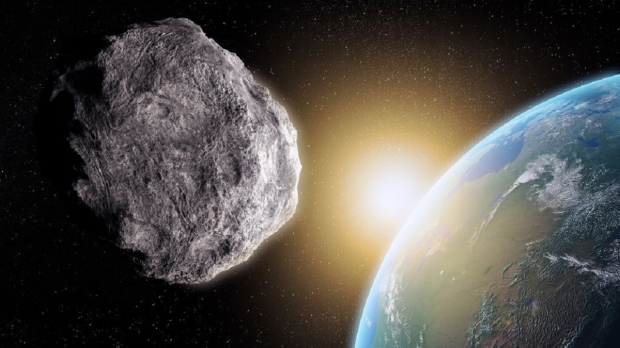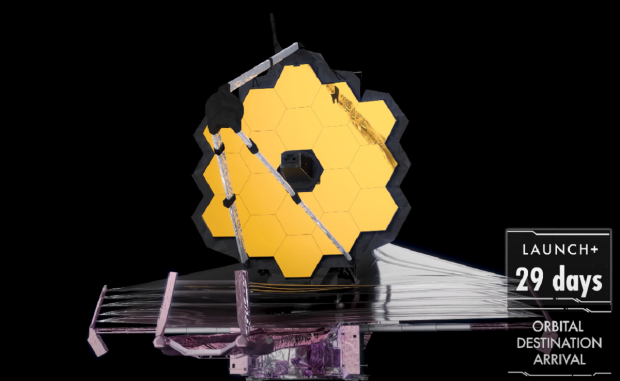Science, Space, Health & Robotics News - Page 250
Star 20 times the mass of the Sun explodes, creates this insane nebula
NASA is celebrating Nebula November, and the space agency is revisiting all of the incredible nebulae that have been observed throughout our Milky Way galaxy.
One particular jaw-dropping image captured by NASA and the European Space Agency's Hubble Space Telescope is of the Veil Nebula. NASA Hubble Space Telescope used its Wide Field Camera 3 instrument to observe the Veil Nebula that's located around 2,100 light-years away from Earth within the constellation Cygnus. NASA explains that the Veil Nebula is a result of a star that's estimated to have been 20 times the mass of the Sun exploding in a violent supernova around 10,000 years ago.
NASA writes that the star lived fast and died young, and when its life came to an end, it released a large amount of energy into the space around it. The shockwaves from the explosion and the debris "sculpted the Veil Nebula's delicate tracery of ionized gas - creating a scene of surprising astronomical beauty." Ionized oxygen can be seen in the blue colors, ionized hydrogen and ionized nitrogen can be seen in the reds. If you are interested in reading more about the Veil Nebula, check out this link here.
Continue reading: Star 20 times the mass of the Sun explodes, creates this insane nebula (full post)
NASA astronaut explains how he thought he was going to drown in space
A former NASA astronaut has explained how he thought he would be the first astronaut to ever drown during a spacewalk.
Former NASA astronaut Garret Reisman took to Twitter to give an "astronaut tip" where he said that all astronauts should make sure their bite valve is firmly attached to your water bag straw. Looking at NASA documentation regarding astronaut suits and helmets, spacesuits contain a drinking bag of water that has a straw running into the astronaut's mouth. Reisman goes on to say that during a spacewalk, he saw his water bag floating inside of his helmet.
Here's what Reisman said, "Astronaut Tip #217: Make sure your bite valve is firmly attached to your water bag straw. When I saw mine float by INSIDE my helmet I was less than thrilled at the thought of becoming the first astronaut to drown during a spacewalk." Reisman added, "Fortunately, the surface tension proved to be enough to keep the majority of the water in the bag."
Continue reading: NASA astronaut explains how he thought he was going to drown in space (full post)
NASA posts wild nebula image, 'one of the most unusual' in our galaxy
NASA is celebrating Nebula November and is going back through some of the images taken by the Hubble Space Telescope of the crazy nebulas that have been found.
To kick this week off strongly, the Hubble Twitter account has posted an image of the Red Rectangle Nebula that is formally called HD 44179. NASA explains on its website that at the center of this nebula is a dying binary star system that has been shedding its outer layers for around 14,000 years. NASA continued to explain that the unusual shape is likely due to "a thick dust torus which pinches the otherwise spherical outflow into tip-touching cone shapes."
So, what about its color? Researchers are yet to understand the colors of the nebula fully, but speculation has led scientists towards assuming that the color may be provided by hydrocarbon molecules that "may be the building blocks for organic life", writes NASA. The Red Rectangle nebula is positioned 2,300 light-years away from Earth within the Unicorn constellation. If you are interested in learning more about this strange nebula, check out this link here.
Continue reading: NASA posts wild nebula image, 'one of the most unusual' in our galaxy (full post)
NASA officially delays launch of next astronauts headed to the ISS
NASA announced on Sunday that the launch for SpaceX Crew-3 that is headed to the International Space Station (ISS) has been delayed yet again.
Originally, NASA and SpaceX had planned to swap over the Crew-2 astronauts onboard the ISS with the Crew-3 astronauts before Crew-2 departed the station, but that now isn't going to happen as the space agency has changed its plans for how the two teams will swap positions. NASA has decided to send the Crew-2 astronauts back down to Earth before the arrival of the Crew-3 astronauts. Crew-2 is scheduled to return back to Earth on November 8 at 2:05 pm ET.
Following the return of the Crew-2, SpaceX will launch Crew-3 on the back of its Falcon 9 rocket, marking the third long-duration crew mission to the ISS. That launch is scheduled for November 10, and at the moment, SpaceX is estimating that there is 80% of the weather will be favorable for launch, according to a recent tweet from the space transportation company. If you are interested in reading more about this story or would like to learn more about the launch, check out this link here.
Continue reading: NASA officially delays launch of next astronauts headed to the ISS (full post)
NASA expert answers 'when was the last time an asteroid hit Earth?'
A new video that is part of NASA's "We Asked a NASA Expert" series tackles the question, "When was the last time an asteroid hit Earth?"
NASA asteroid expert Marina Brozovic explains that the last time an asteroid hit Earth really depends on if you are asking about small or large impacts. Brozovic explains that Earth is bombarded by small asteroids all of the time, but luckily for humans on the surface, these small space rocks usually burn up in the atmosphere on their way towards the ground.
As for large asteroids that can cause impact craters that span miles in width, Brozovic explains that the last time such an event happened was millions of years ago. Large asteroid impacts are considered to be "rare", but that doesn't mean they aren't dangerous, just unlikely. NASA and other space bodies around the world are tracking more than 90% of these large asteroids that could one day pose a danger to Earth. For more information on asteroids, check out this link here.
Continue reading: NASA expert answers 'when was the last time an asteroid hit Earth?' (full post)
Three blasts from the Sun to hit Earth very soon, one is 'cannibal'
Three bursts from the Sun have been observed, and these bursts are heading towards Earth. Officials expect an impact very soon.
The Sun can launch what scientists call coronal mass ejections (CME) from its surface, which are large expulsions of plasma and magnetic field that usually come after a sunspot, knots in the Sun's magnetic field, erupt. Officials at the NOAA Space Weather Prediction Center confirmed that on November 1 and November 2, a sunspot called AR2887 released two of these CMEs, which was followed by a third CME from sunspot AR2891.
The first two blasts from the Sun are moving much slower than the third, as the third ate its way through the first and second. All three of the CMEs are on track to hit Earth, with arrival times for the large CME to be on November 3. Officials also warned that the CME impact might produce minor to moderate geomagnetic storms in Earth's upper atmosphere that can cause disruptions for power grids, satellite orientations, GPS communications, and more. On a more positive note, the CME impact can also cause beautiful auroras, such as this one.
Continue reading: Three blasts from the Sun to hit Earth very soon, one is 'cannibal' (full post)
Officials confirm blast from the Sun will hit Earth soon, date found
The NOAA Space Weather Prediction Center recently warned multiple coronal mass ejections (CME) are heading directly towards Earth.
Following up on yesterday's story, the NOAA Space Weather Prediction Center has published a new update regarding the incoming CMEs. For those that aren't aware of the multiple CMEs heading towards Earth, on 01-02 November, the Sun erupted several CMEs from its southwest area, one associated with a C4 solar flare and another related to an M1 flare. NOAA originally predicted that the impacts might cause a G1 (minor) geomagnetic storm, but now the official prediction center has updated its forecast.
According to the recent update published to the official NOAA website, "The G1 (Minor) Geomagnetic Storm Watch for 04 Nov has been upgraded to a G2 (Moderate) Geomagnetic Storm Watch. The G1 (Minor) Geomagnetic Storm Watch for 03 November remains in effect." It should be noted that these impacts pose no danger to humans on the surface of Earth but can cause disruptions for satellites, GPS communications, and radio communications. Additionally, CME impacts can cause auroras to appear in the sky. To learn more about CMEs, check out this link here.
Continue reading: Officials confirm blast from the Sun will hit Earth soon, date found (full post)
Scientists were unaware of the asteroid that just barely missed Earth
There are many asteroids floating around in the solar system, and sometimes one passes extremely close to Earth.
NASA, along with other official bodies around the world, are tracking all of the asteroids that are considered a "threat" to Earth. For an asteroid to be considered a "threat", it must be more than 460 feet in diameter, and luckily 90%+ of the asteroids that are this width or more are currently being tracked. The smaller asteroids are much harder to track, and sometimes researchers are unaware that they even have had a close flyby with Earth.
Asteroid 2021 UA1 is a prime example, as researchers didn't know it had come extremely close to Earth until after it passed by. Asteroid 2021 UA1 measures 6.6 feet in diameter, and on October 24, it passed over Antarctica within 1,800 miles of Earth. Researchers didn't know that the small asteroid was on its way because the asteroid approached from Earth's daytime side - the direction of the Sun. If you are interested in reading more about this story, check out this link here.
Continue reading: Scientists were unaware of the asteroid that just barely missed Earth (full post)
NASA's most powerful telescope will keep the world on edge for 29 days
NASA is inching closer and closer to the launch of its highly anticipated James Webb Space Telescope, which has been quite literally decades in the making.
NASA and many contractors have been building the James Webb Space Telescope for many years now, and unfortunately, the project has been plagued with delays that caused its budget to skyrocket into the multiple billions. But now the construction road is nearing its end, as the telescope has been transported to the last place, it will be on Earth, French Guiana, South America, where it will be launched into space close to the end of next month.
The launch and setup of the telescope will be the most challenging part of getting the telescope out observing the universe, as the entire process has to go according to plan, or the telescope will be completely useless. In the above video, the NASA team working on the telescope says that Webb has "300 single-point failure items, and they all have to work right. When you're a million miles from the Earth, you can't send someone to fix it". The European Space Agency and NASA have locked in December 18 for the launch.
Continue reading: NASA's most powerful telescope will keep the world on edge for 29 days (full post)
Multiple solar flares will hit Earth, officials confirm arrival times
Officials have confirmed that several coronal mass ejections (CME) are on the way from the Sun, some of which are directly in line to impact Earth.
NOAA Space Weather Prediction Center confirmed with an update that several CMEs erupted on the Sun on the 1st and 2nd of November. With the data, the researchers applied it to their current models and found that there are "likely Earth-directed components to a few of them."
NOAA notes that the CMEs came from the southwest area of the Sun, with one CME being linked to a C4 flare from NOAA/SWPC Region 2887 at 01/2133 UTC (02/1:33 am EDT) and another CME being related to an M1 flare (R1-Minor Radio Blackout) from Region 2891 at 02/0301 UTC (02/7:01 am EDT) near the center disk. Additionally, NOAA states that its confidence in the measures of the Earth-directed components remains at "moderate" levels, "while there is less confidence in timing and intensity." At the time of writing this, current predictions state that there are G1 (minor) Geomagnetic warnings for November 3 and 4 that coincide with the arrival of the blasts.
Continue reading: Multiple solar flares will hit Earth, officials confirm arrival times (full post)



